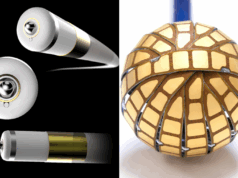
The president of the European Society of Cardiology (ESC) has called for greater awareness of the signs of cardiac arrest and how to respond, following the collapse of Danish footballer Christian Eriksen, during a European Championship match this week.
Eriksen, 29, collapsed shortly before half-time during Denmark’s opening match against Finland on Saturday, and received urgent attention for cardiac arrest from medical professionals present at Copenhagen’s Parken Stadium. Subsequent reports suggest he is to receive an implantable cardioverter-defibrillator (ICD) to guard against future cardiac arrest.
“It was a chilling sight for anyone who saw it,” said ESC president Stephan Achenbach (University of Erlangen, Erlangen, Germany), commenting on Eriksen’s collapse and treatment on the pitch, which unfolded in front of thousands of spectators in the stadium and millions watching live on television across the globe.
“Preliminary reports suggest that while he was being treated on the pitch, Christian’s heart stopped beating,” said Achenbach. “He was exceptionally fortunate that there was a medical team to immediately begin chest compressions and maintain blood flow. It probably saved his life.”
Sudden cardiac arrest is a public health problem, accounting for 50% of cardiovascular deaths and 20% of all natural deaths in Western societies, according to a paper published in the European Heart Journal.
“Cardiac arrest can occur anytime, anywhere,” Achenbach added. “The question is: Would you know how to respond? Every second is critical.”
In a press release, ESC has highlighted several important points for members of the public to be aware of around cardiac arrest, including when and how to help.
When to help:
– Someone is not breathing or only gasping for air;
– not otherwise moving or blinking;
– not responding, even to hard taps.
How to help:
– Push down on the centre of the chest at a rate of 100 to 120 pushes a minute. Allow the chest to come back up to its normal position after each push;
– shout for someone to call an ambulance;
– ask bystanders to locate an AED (automated external defibrillator) and follow the instructions.
“You can´t do any harm by doing chest compressions” said Achenbach, “but you can save a life if the person is indeed in cardiac arrest.”









